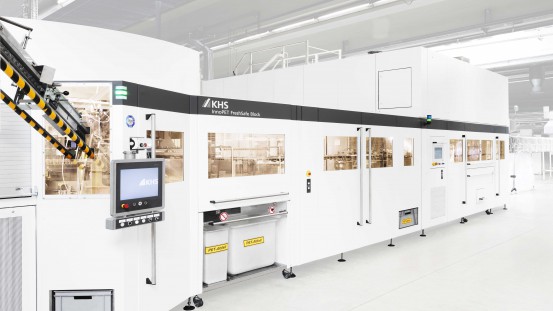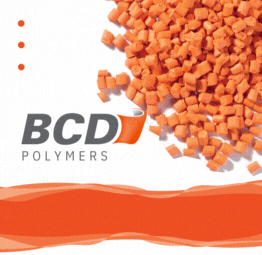Plastic bottles should be returned to a deposit machine. However, as is so often the case, unfortunately there are exceptions to this rule. While a deposit is levied on apple spritzer in non-returnable PET bottles, there is no such obligation for apple juice in the same type of packaging. Juice bottles are thus collected through dual waste disposal systems and cannot be recycled to make new PET bottles in the sense of a circular economy. For consumers, this rule is confusing. Regarding the protection of the environment, too, the current legislation is also hard to fathom. Due to the limitations of the mandatory deposit system, about 10% of all PET bottles each year are lost to the closed recycling loop according to a study by packaging market research institute GVM from 2018[1]. This amounts to approximately 40,000 metric tons of plastic per annum that cannot be reused to make food packaging. The German federal state of Hesse has since recognized this problem and together with Baden-Württemberg applied to widen the scope of the compulsory deposit on beverage containers in the upper house of German parliament – with success. This recently voted in favor of extending the mandatory deposit system to cover all non-returnable plastic bottles.
Juice bottles: the problem of recyclability
This recommendation is cause for concern to many German juice producers who fill their products into non-deposit one-way PET bottles. Unlike water or a lot of carbonated soft drinks these sensitive beverages have to be protected against external influences such as oxygen pickup. To ensure this protection, juice and nectar bottles made of PET often contain additives with oxygen absorbers. These additives make them more difficult to recycle than a normal PET bottle as despite being subjected to elaborate processes the various materials cannot be separated during recycling and cause discoloration of the recyclate, for example. This complicates pooled recycling with the conventional non-returnable PET containers in the deposit system and renders global bottle-to-bottle recycling, for which 100% pure rPET is required, practically impossible.
One environmentally-friendly alternative is to use an oxygen barrier made of chemically pure glass. The wafer-thin coating on the inside of the PET bottle not only effectively protects the juice from oxygen pickup but is also fully recyclable. During the standard recycling process the coating is hydrolyzed using hot caustic and thus removed from the inside bottle wall. It then goes into solution and the pure PET can be collected by type.
Solution available
The KHS Group is a pioneer in the field of interior glass coating for PET bottles. For about 15 years now the systems manufacturer and packaging specialist has offered its customers in the food and beverage industries a fully recyclable system for juice bottles. Bottlers of renown such as Eckes-Granini have been using the ecofriendly packaging system named FreshSafe PET® for many years.
The manufacture of the recyclable PET bottle differs only slightly from that of a conventional juice bottle. In both cases a standard PET preform is used as the basic material. These plastic containers that look like a test tube with a screw top are turned into bottles on a stretch blow molding machine. Here, the preform can be made of new plastic or of recycled material – or what is known as recyclate.
In the FreshSafe PET® system the bottle is then fed to a downstream coating machine. KHS provides this in a number of different versions and with various capacity ranges. The KHS InnoPET Plasmax 20QS, for example, outputs up to 48,000 bottles per hour. The turnkey supplier’s extensive portfolio also includes two compact block systems. The InnoPET FreshSafe block linked up to a KHS stretch blow molder produces empty coated PET bottles. The KHS InnoPET FreshSafe TriBlock comprising a stretch blow molder, coating machine and filling unit blows, coats and fills the bottles on a single machine before these are then sealed.
From pharmaceuticals to food and beverages
The bottles are coated using the PICVD[2] method, a process first used in the pharmaceutical industry. In this process a reaction gas mixture is introduced into the PET bottle in a fine vacuum and this subsequently transformed into a plasma state by microwaves. In this state SiOx or chemically pure glass is deposited on the inside of the bottle.
The interior glass coating is transparent and has a thickness of less than 0.1 µm. It is thus flexibly and chemically bonded to the inside wall of the juice bottle. This prevents the glass coating from being accidentally removed when force is applied to the PET bottle, for instance; it can only be separated during the recycling process. Thanks to this particular property the FreshSafe PET® bottle from KHS is 100% bottle-to-bottle recyclable. This has also been recognized by trade associations such as the European PET Bottle Platform and the Association of Plastic Recyclers (USA). Furthermore, the bottle’s suitability for use with foods has also been officially proven. In many countries including the USA and the whole of Europe the KHS system has food-grade approval.
For consumers and the environment: FreshSafe PET® has many benefits
After coating the FreshSafe PET® bottle can be filled with product and provides full protection against both oxygen pickup and loss of CO2 and water vapor. In this way the Plasmax coating prevents the quality of the sensitive beverage from being compromised and means that the product keeps up to ten times longer than in uncoated plastic bottles.
In addition, glass-coated PET juice bottles have a number of further benefits – both for the consumer and the environment. For instance, plastic bottles are much lighter than glass bottles. This has a positive impact on the amount of CO2 emitted by trucks as fewer bottles or lower load weights mean less gas consumption. Plastic bottles are also unbreakable and flexible.
In addition to environmental aspects and the protection of the product, economy is also important. On the one hand, thanks to the glass coating the amount of plastic used compared to containers with oxygen absorbers is lower, thus yielding cost savings. On the other, bottlers can work with standard PET preforms, further reducing the cost per bottle.
KHS promotes the closed recycling loop
The greatest advantage of the FreshSafe PET® system, however, lies in its ability to be fully recycled to produce pure PET. With this the KHS Group supports efforts to create a closed PET recycling loop and facilitate bottle-to-bottle recycling. This is essential if plastic bottles are to have a positive ecobalance, as the ALPLA LCA Packaging study carried out last year illustrates.[3]
In order to continue to boost the high recycling rate of about 93%[4] for PET bottles in Germany and further strengthen the bottle-to-bottle recycling loop, the KHS Group recently introduced an innovative bottle concept for sensitive beverages. Its Beyond Juice bottle is a fully recyclable PET bottle made entirely of recycled materials. Thanks to the FreshSafe PET® barrier system it provides outstanding product protection. Environmental service provider Interseroh has issued the container with its Made for Recycling seal of quality. The Beyond Juice bottle is the first PET bottle ever to score a full 20 out of 20 points in this rating system.
With the new bottle concept juice producers can save more than 1,500 metric tons of raw materials at a production of 50 million bottles a year. In doing so they are greatly helping to improve the ecobalance of plastic packaging. The Beyond Juice bottle is even more environmentally friendly in combination with Nature MultiPackTM from KHS, a container system that holds bottles together with dots of adhesive which are strong and secure yet easy to remove. With the help of this tried-and-tested packaging variant the plastic film otherwise used to form PET bottles into packs of six, for example, is no longer required. This reduces the amount of packaging waste by up to 90%. Like the coated PET juice bottles, the dots of adhesive are also fully recyclable.
[1] Gesellschaft für Verpackungsmarktforschung (2018): “Aufkommen und Verwertung von PET-Flaschen in Deutschland 2017” (occurrence and recycling of PET bottles in Germany). Study carried out on behalf of Forum PET within the German Association of Plastics Packaging and Films.
[2] PICVD stands for Plasma Impulse Chemical Vapor Deposition.
[3] c7-consult (2019): “Ökobilanz für Gebinde aus PET und anderen Materialien” (ecobalance for containers made of PET and other materials), on behalf of ALPLA Werke Alwin Lehner GmbH & Co KG.
[4] Gesellschaft für Verpackungsmarktforschung (2018): “Aufkommen und Verwertung von PET-Flaschen in Deutschland 2017” (occurrence and recycling of PET bottles in Germany). Study carried out on behalf of Forum PET within the German Association of Plastics Packaging and Films.



